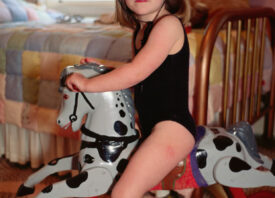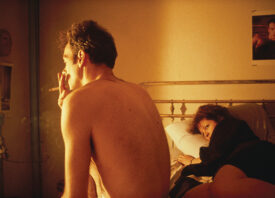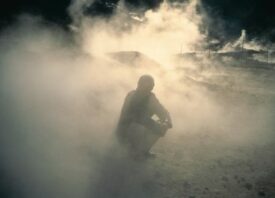Search this site
Nan Goldin’s Extraordinary Document of Life on “The Other Side”



Back in 1972, Nan Goldin was walking through downtown Boston when she came upon three trans women that would become her entrée into another world. As Goldin watched Ivy, Naomi, and Colette crossing the bridge near the Morgan Memorial Thriftshop, she immediately became infatuated with their beauty and their poise, following them with a Super 8 camera, making a video as they walked.
Soon thereafter David Armstrong, Goldin’s closest friend, started to perform at The Other Side, Boston’s premier drag bar. Goldin accompanied him and was transformed. “I was eighteen and felt like I was a queen too,” she wrote in an essay published in her 1993 seminal monograph, The Other Side, which Steidl recently reissued in an expanded volume featuring additional images and texts.
“Completely devoted to my friends, they became my whole world. Part of my worship of them involved photographing them. I wanted to pay homage, to show them how beautiful they were. I never saw them as men dressing as women, but as something different—a third gender that made more sense than either of the other two.”
Goldin accepted them as they saw themselves, using photography as a means to crystalize the exquisite nuances of character manifest in the power of identity and the creation of self. Her portraits reveal the space where the mind, body, and soul meet, where who we are is what we manifest. Her photographs are not simply documents of fact, but poetry of written by the spirit upon the flesh.
When Goldin moved to New York in 1990, she met a new cast of characters through Armstrong once again, and made it her mission to photograph this moment in the city’s history just after Paris is Burning was released. It was a time when gentrification was growing baby teeth, and hadn’t yet torn asunder the fabric of city life. AIDS and crack were still running rampant and the city was still a war zone — yet in Goldin’s photographs we see only the beauty of the world.
In the ‘90s, Goldin expanded her purview, traveling to Berlin, Bangkok and the Philippines to look at the drag phenomenon as it was emerging in full bloom during a period of fluidity and self-expression that echoes in our culture today. The book concludes with photographs made in Paris and Moscow in the late ‘00s, creating an expansive yet intimate portrait of trans lives that are mesmerizing in their modest grandeur, each person a study of the space where the private and the public mingle and merge.
Goldin captures the glamour and the glory of her friends lives, revealing the passion and power it takes to become who one truly is in the world. In looking at these photographs, it’s easy to feel Goldin’s devotion and love, her inability to see them as other s reminder how powerful photography truly is. It’s easy to forget her friends are forced to live in the margins, rejected by families, and targeted by the state. It is for this reason that the added texts carry so much weight.
“Everyone had died except Marlene. Colette was killed in a drug deal gone bad, Naomi died of AIDS, Denine was shot by her boyfriend. AIDS and violence have wiped out our tribe, a whole generation of pioneers gone,” Goldin wrote in second essay date July 2019.
“The preservation of memory is one of my main motives in republishing this book. Kim and Greer, who paved the way, died tragically from AIDS and drugs. Scott/Misty who brought makeup artistry to another level took his own life. Kenny the original aesthete died from AIDS. Katheleen, who taught me what it means to be sweet, Rene Codie — so many of the stars of this book are gone.”
It’s a haunting truth that echoes in our present day, as at least 22 trans women were murdered in the United States in 2019. Both a memento mori and a elegy to those she loves, The Other Side is Goldin’s majestic tapestry of humanity at its best, giving themselves to one another and creating a community, a space for self actualization and freedom in the truest sense of the word.
“This book is a record of the courage of the people who transformed that landscape to allow trans people the freedom of now,” Goldin writes. “My dream since I was a kid was of a world with completely fluid gender and sexuality, which has come true as manifested by all those living publicly as gender non-conforming. The invisible has become visible.”



All images: © Nan Goldin, courtesy of Steidl.


